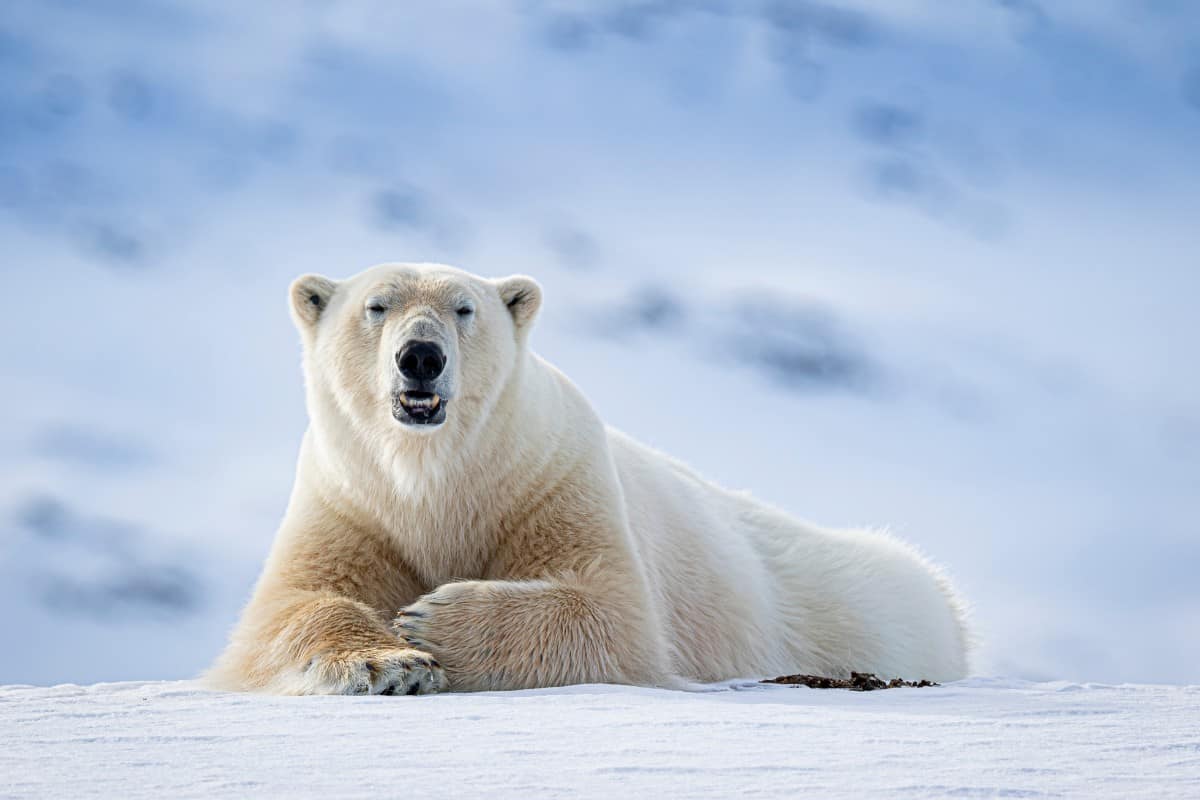Bears are one of the most iconic and beloved animals in the world. From their cuddly teddy bear image to their fierce reputation as apex predators, bears have captivated us for centuries.
But where do bears live? And what type of behavior can we expect from them if we were to encounter one?
This article will explore both questions by examining different species of bears, their habitats, and how they interact with humans and other wildlife. We’ll also discuss how climate change is impacting bear populations around the globe and what we can do to help protect these amazing animals.
Skip ahead:
Different Species Of Bears
Bears are found on every continent except Antarctica and come in various sizes and colors.
The brown bear (also known as a Grizzly bear) is the most well-known species, which can reach up to eight feet tall and weigh as much as 1,500 pounds.
Other species, such as the North American black bear, Asian black bear, Asiatic black bear, and polar bear, can also be found in different parts of the world.
Each species is adapted to its environment, with some living mainly on land while others inhabit both land and water habitats.
Bear Habitats Across The Globe
The habitats of bears vary drastically depending on the species.
Brown bears are typically found in North America, Europe, and Asia and typically inhabit forests, mountains, meadows, and tundra regions where they can hunt for food.
Polar bears live exclusively within the Arctic Circle and rely heavily on sea ice to catch their prey.

Asiatic black bears can be found in regions of East Asia, living in dense forests and grasslands.
The North American black bear is the most adaptable species, as it can inhabit various habitats, including deciduous forests, mountain meadows, tundra, and even deserts.
Regardless of their environment, all bear species require a plentiful source of food, water, and shelter to survive.
How Bears Behave
Bears are generally solitary creatures that tend to avoid contact with humans or other animals. However, they can be quite territorial when it comes to defending their food sources or cubs.
Depending on the species, bears will either hibernate during winter or migrate for better food sources.
Polar bears, for example, hunt primarily on sea ice, where they can access seals and other marine animals.
Brown bears will take advantage of salmon runs when they’re available, while Asiatic black bears are adept tree climbers that feed on fruits found in their habitats.
In addition to their diverse diets, bears also exhibit interesting behaviors such as chasing other animals, digging dens, and playing in the water.
For example, brown bears will sometimes play “king of the hill” by rolling around on top of an object until someone else pushes them off. It’s these unique characteristics that make bears so fascinating and popular.
Human Interaction With Bears
Despite their size and strength, most bears will avoid contact with humans if given the chance.
If they do encounter someone, it’s important to remain as calm as possible and never run away, which can provoke the animal into attacking.
In some cases, bears can become habituated to humans when fed or provided with easy food sources.
This dangerous behavior can lead to human-bear conflicts, so it’s important never to feed wild animals and respect their habitats at all times.
Human-Bear Conflict
In some parts of the world, hunting has led to a decline in bear populations, while in other regions, there has been an increase in human-bear interactions due to expanding development and tourism.
Bears are also popular among photographers who want to capture their beauty and behavior in the wild.
In addition to hunting, some people keep bears as pets, which is strongly discouraged due to their size and strength.
Bears require a lot of space and specialized care that most pet owners cannot provide.
For these reasons, owning a bear in captivity can be dangerous for animals and humans.
When it comes to protecting bears, research and education are key.
People can better understand their behavior and habitats by learning more about these animals.
This knowledge can help reduce human-bear conflicts and ensure that these majestic creatures continue to thrive in the wild for generations to come.
How Climate Change Affects Bears
Climate change is having a devastating effect on the world’s bear populations.
As temperatures rise, sea ice melts at an alarming rate, affecting polar bears who depend on it for their primary food source.
Meanwhile, brown and Asiatic black bears face shrinking food sources due to changes in vegetation caused by droughts, wildfires, and other extreme weather patterns.
In addition, rising temperatures have also forced some bears to migrate to higher elevations in search of more suitable habitats.
Climate change is also impacting the health of individual bears.
Increasing temperatures can lead to heat stress and dehydration, while changes in vegetation can cause poor nutrition and illness.
Furthermore, climate change can also cause changes in the distribution of bear populations, leading to increased competition for resources and potential conflicts with humans.
To protect bears from extinction, it’s essential that we act now to reduce our carbon emissions and mitigate the effects of climate change.
This includes reducing our reliance on fossil fuels, investing in renewable energy sources, and protecting the habitats of these animals.
With our help, these majestic creatures can continue to thrive in the wild for many years to come.
Final Word
Bears are intelligent, majestic creatures that have captivated people for centuries.
To ensure their survival and protect them from extinction, we must educate ourselves about bear behavior and habitats while reducing our carbon emissions to mitigate the effects of climate change.
By taking these steps now, we can work together to create a brighter future for bears worldwide.
